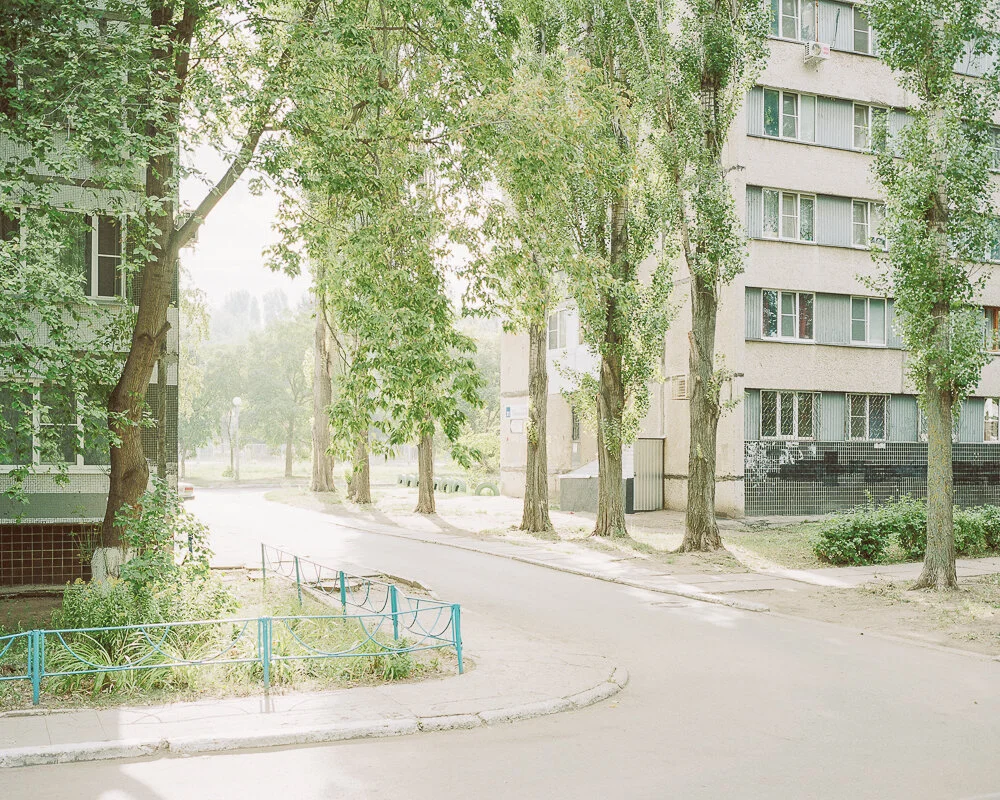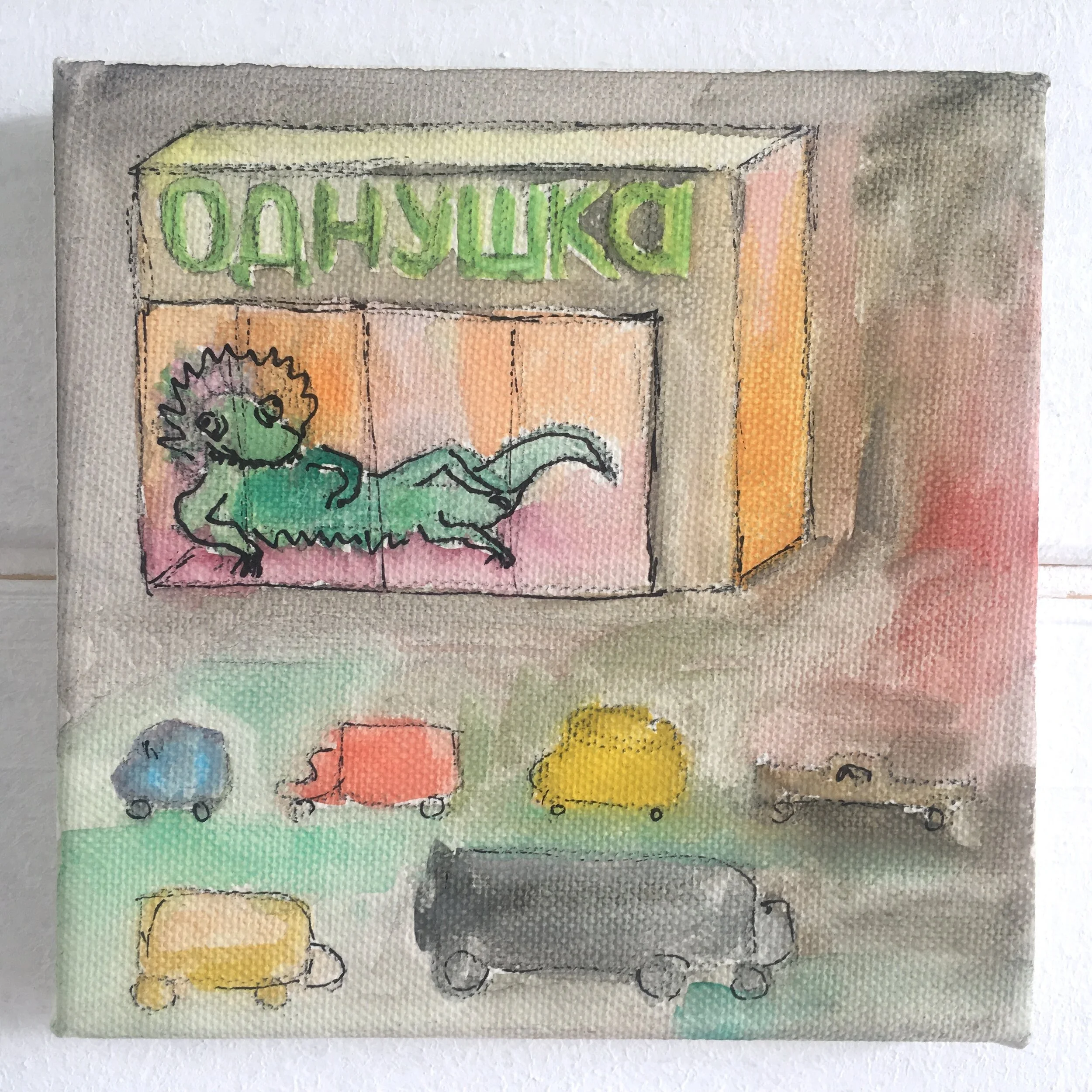Simon Mraz, Austrian cultural attaché & curator of Na Rajone
Some people’s drug of choice is art and people. The more they see, the more they interact, the higher they get. Simon Mraz is one of these “crazy good arty junky”.
Cultural attaché for the Austrian Embassy in Russia for ten years, the russian pulse runs through his veins. Promoting Russian contemporary artists has become a personal mission for him.
Discover the person beyond the project Na Rajone (Beyond the center) that will be launched in a few days in Moscow’s peripheric neighbourhoods.
What brought you into the art world ? and to Russia ?
As a child, I spent summers with my mother. She told me stories about the Russian army entering Vienna at the end of WWII, with the French and the Americans. My grand-grandmother was Czech and could chat with the Russian soldiers. So from my childhood memories, Russia was always present.
Then in the 80s, my school offered to take Russian classes. I refused, thinking I would never use it !
Then as a student in art history, I worked for an auction house in Vienna - it was before the 2008 crisis. We had a lot of Russian clients and I was sent to Russia. I was 27 years old, I didn’t understand anything and it was fascinating. Attractive because a bit tough. Harsh but beautiful. Later in 2009, I came back as a cultural attaché.
In 2009, and still today, there is a lot to be done in communicating the vibrancy and talent of Russian contemporary artists and Russian art internationally. Things are changing but it is still a real challenge to stand up for creation in Russia and everywhere.
The Russian cultural system is very different from the Austrian one, I presume ?
The Austrian and French cultural systems are very much alike : they are based on supporting artists by public funding. Today, this system is party a bit tired and we shouldn’t recommend copy-pasting it 1:1 in other countries such as Russia. Our system is well-meant but is not something new, or relevant here.
Still, what is key in Europe is a common sense and a commitment from the States towards creation. It is a given that contemporary art is an element of the self-understanding of our countries. As it is not the case in Russia, it is a big problem for artists. They will keep being seen as strange, even dangerous, when they are not stuck in the cultural heritage. It is very difficult to go into any discussion about Russian art as long as the Russian patriotism stops at rockets or agricultural products. As a foreigner, it is important to express this.
Tell me about Na Rajone :
For years, I was opening regional projects. But you don’t need to go so far. Moscow as a city is an incredible place that reflects the radical story of the country : fires, Napoleon war, Stalinist reconstruction, … You can read it all in the city : its style, its architecture, the shape of its districts. After war architecture, Industrialization, Brutalism, the crazy 90s : the spirit of the time is reflected here.
And this is very counterintuitive for most people. Moscow is not just about the Red square and the Kremlin. Where the hell is the rest ?
This is what Na Rajone is about.
About Na Rajone
This project is an artistic exploration of Moscow beyond the city center: workers districts, so-called green districts, sleeping districts, new districts – those parts of the city where the overwhelming majority of citizens live.
It has been over two years Austrian Cultural Forum and its partners are reaching out for initiatives and artistic projects dealing with Moscow's districts and periphery, collecting artistic projects – partly shown already on different occasions, partly specially commissioned and dedicated to the cultural dynamics beyond the city center.
City districts are those critical places where the culture of today and tomorrow is defined, not artificially but driven by the real circumstances of life and growing from the very middle of society – common life as the manifestation of cultural behavior. Also it is the struggles and dreams of everyday life that are determining the relevant questions of today's culture and also the aesthetics themselves: youth cultures have grown up, the aesthetics of former sub-cultures are dominating what today's young people recognize as culture – in fashion, in the visualization of music clips, in arts.
The goal of “Na rajone/Beyond the center” is to collectively present some of the most important recent art projects by Russian artists dealing with the topic of Moscow districts and at the same time as Austrian-Russian cultural project to bring to Moscow some of the most interesting Viennese cultural initiatives dealing with periphery, district culture to Moscow, respectively to try to implement these projects in Moscow together with Moscovite partners.
The goal is not to search for exoticism like documenting compounds with the villas of so-called oligarchs or to exploit the places as a source of inspiration, more importantly all the activities and projects should take place in districts, should be at the same time about city districts but also a contribution to the places, should be integrated into the places the works are actually about.
This project is planned as a work over several years started in early 2018 and will be continue far into 2020.
How did you get so many different partners around the table ?
One advantage to this city is that it is still a place where you can invent anything and approach anybody. The idea of the project is not to hide and only be accessible to a closed small artsy fancy art community. If we are talking about districts of Moscow and the city´s periphery, then we need to have the discussion there. It does not make sense to go there, make a photo series and show them in a museum of the center.
One of the difficulties about contemporary art is that you need to give people a chance to get acquainted with it. People of the periphery are not dumb. They can develop an interest and that is how you find a partner in the local market director. To involve people, you have to be on site, not to look at them from afar. It is not interesting and not very fair otherwise.




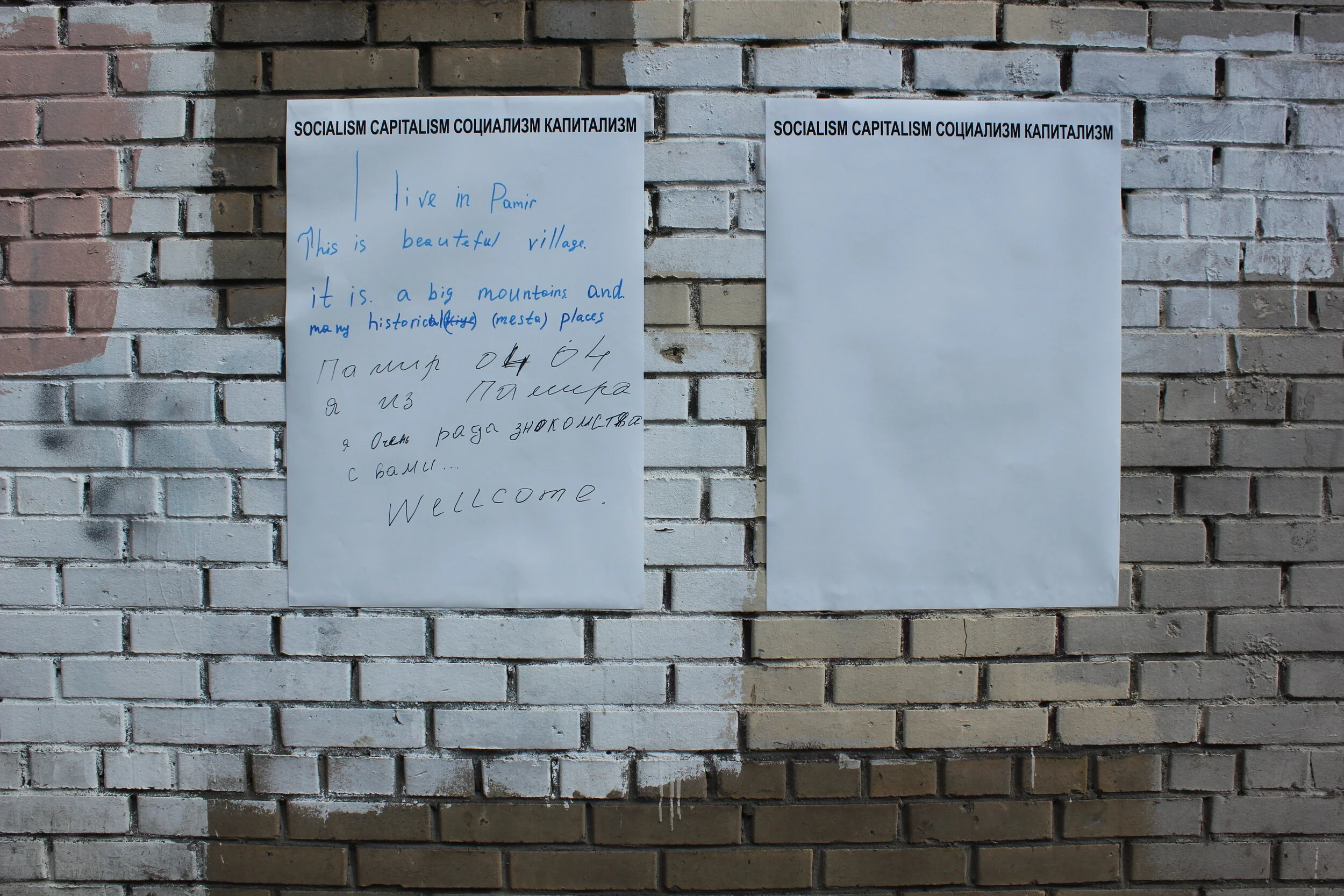
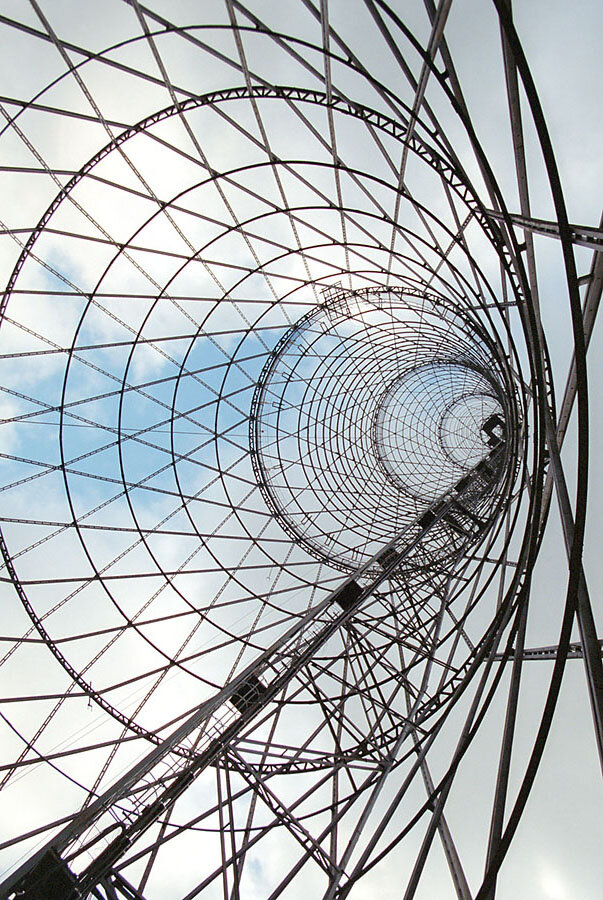
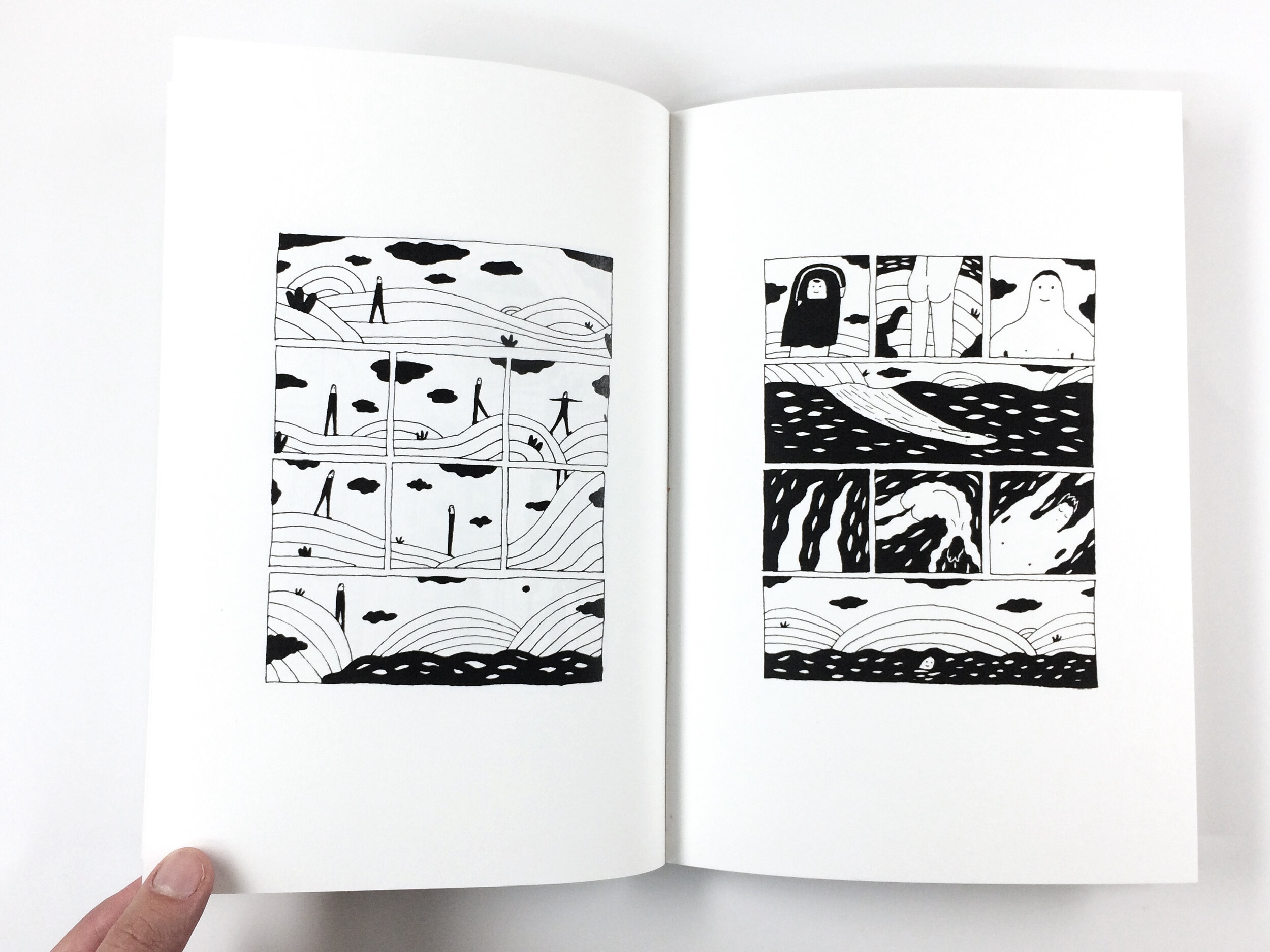

Proekt Fabrika is a former paper factory hosting many artists’ studios and is amongst the most open-minded and accessible exhibition spaces for young artists in Moscow, The “In Situ” project curated by the two young Moscow curators Kristina Pestova and Anna Koslovskaya for the first time in Moscow maps the location of artists studios across Moscow in order to understand where the life and work of artists in Moscow is actually taking place and invites artists working at Proekt Fabrika (Russians as well as international artists like those of the newly founded Austrian Art Residence) to interact with the space on Proekt Fabrika ́s territory and beyond .
Opening: 15th October 2019, 19:00
What were the reactions ?
People are very different but they share a basic curiosity, rooted in the very quick changes that are part of the history of the country. This curiosity is a huge chance. It is very important not to spoil it by being arrogant and making a copy of the artsy champagne party situation.
For example, the local market director never had a connection with contemporary art throughout his life. But he created a huge market, he achieved something. As such, and as most of the people here, he develops very fast, works hard and creates in his own way. These people are looking for chances, challenges, and sometimes get curious. When I met him, he gave me the chance to explain myself, listened, got interested and let it happen.
The Odnushka project represents a social sculpture, dedicated to the most popular type of housing in Russia—the one-room flat. The project is going to be realized as a public art project in Novo-Molokovo, one of the most ambitious new districts on the outskirts of Moscow. Elena Kolesnikova and Elena Ishchenko transform an ex-sales office into a typical, but free-standing, one-room flat, transforming the intimate place that a flat represents into a public space where meetings and discussions among inhabitants of the newly built Novo-Molokovo housing complex can take place. As a meeting place with a cultural program, ‘Odnushka’ at the same time explores the experiences of people in modern conditions of new apartments and new housing districts, where everything starts over—renovation, friends, family, daily routines, space for relaxing, and daily habits.
«Odnushka» opened on 1st of May 2019. Six artists were in residence. The results of their time in the neighbourhood will be presented from October 19, 2019.
Do you feel a responsibility towards Russian artists ?
I am very passionate about creative Russia. I sincerely believe in Russian artists because the new generation is so relevant. Even though it is very tough to be an artist here, there still are very special artists.
I am not rich nor powerful, but I want to take sides with creative people. I am very happy when artists trust me, and work with me. When you get so much from Russian artists, you need to give back because they are good. It is not charity. My contribution is to be a good manager and promoite. As foreigners, we are like a bridge. It is my chance to have this role. It is not a heavy role when you truly believe in artists.
The Moscow art scene is swarming. How do you keep up to date?
Actually, the longer you stay somewhere, the more difficult it gets. When you arrive, it is easier to get connected with the new generation and youth.
I decided to do a very simple thing. Every 2 months, I organise an exhibition in my flat. It is a good way to see what is going on because the only rule is that artists are free to come with whatever they want to exhibit and bring new people.
The second thing is to go to all exhibitions with an open mind. Be humble and curious about what you see.
And you need to travel! Russia is not Moscow and there are a lot of talented people out there too.
What would be your advice to improve the situation for Russian artists ?
The first and most important thing is : artists should focus on creating their art. The rest is not necessarily their business. Hopefully, the State will understand that soon. A lot of people are lobbying for that.
Second thing, be confident. It takes time but the ecosystem is setting up. Fairs and private foundations, as well as big galleries, are doing the work of the State. The fact that art is getting fancy is also a good thing basically as the trend will only become broader and broader.
Third thing, invite international curators. This is a good way to make Russian art a hot topic. In the end, art needs to be seen, at home and in the world. Russian artists should not make the mistake of trying to prove that they are international material. What is interesting is that they are different from the international scene while being globally relevant.
If you're curious to see how Simon’s recipe is working, come take part in the numerous and various events of Na Rajone. By first of all providing good working conditions (commissions, residencies…), by secondly creating an ecosystem that supports creation (with collectors, markets, and local administration) and lastly by bringing international curators and artists in Moscow’s periphery, Na Rajone is encouraging Russian artists to work within their territory, making it an inspiration and a subject in itself.




